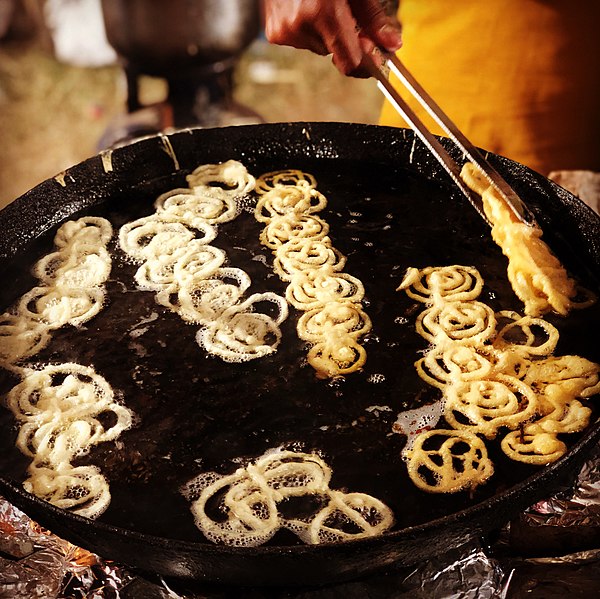Not many of us are aware that one of India’s favourite sweets, jalebii, may not have originated in India. Yes, that is true! Many scholars argue that jalebi came to India along with the Turkish and Persian traders. Zalabiya (Arabic) or Zolabiya/zalibiya (Persian) as they call it was popular in Iran during the Iftar gatherings of Ramazan and Nowruz (Persian New Year).
One of the earliest mentions of zalabiya was recorded in the tenth-century (for some scholars it is thirteenth century) cookbook, Kitab al-Tabeekh written by Muhammad bin Hasan al-Baghdadi, who documented all the dishes of the time including the foods served to the caliph.
In India, jalebi became the local pronunciation of zalabiya, which by the fifteenth century was a part of most feasts and festivals. The fifteenth-century scripture, Priyamkarnrpakatha by Jain author Jinasura mentions how jalebi was popular in the gatherings of wealthy merchants. Another Sanskrit text, Gunyagunabodhini of the seventeenth century lists the ingredients and recipe for making the sweetmeat, which is quite similar to its present-day preparation. Some of the ancient Indian texts mention it as jalavallika (sweet with syrup) or kundalika, a common dish served during weddings or other celebrations. Keeping the traditions alive, today many temples in India distribute jalebi as prasadam (food offering to a god).
The many jalebis
Jalebi goes by various names in West Asia—jilbi, zelapi, jilipi, jilapir, jahangiri, and so on. You will come across various modified versions of it in Greece, Turkey, Iran and African countries as well. Lebanon’s zellabiya is prepared in the shape of a finger rather than as a spiral sweetmeat. In Afghanistan, it is served with fish during the winters, and Egypt’s Jewish community serves zalabia during the Hanukkah celebrations.

In India, we find various ways and ingredients to prepare jalebi. The batter is made out of maida (wheat flour) or urad dal or rice flour with a little besan (chickpea powder) and in some preparations, cardamom powder and kesar (saffron) are added to enhance the flavour. In some parts of the country, it is even consumed with chilled creamy rabri (thickened sweetened milk) or curd or even milk. In Bengal and Odisha, jalebi is made of khoya (evaporated milk) and distributed during the Rathayatra fairs in Odisha. In many parts, jalebi and samosa is a popular breakfast combination—just like jalebi, some scholars believe samosa is also an imported food. In many North Indian states, people relish jalebi with poori-sabzi for breakfast. In Mathura (Uttar Pradesh), aloo (potato) jalebi is very famous, whereas Varanasi serves you jalebi with kachori-sabzi (deep-fried flour bread with curry); in Gujarat, during the occasion of Dussehra, jalebi is eaten along with fafda (crisps made from gram flour), and during the winters in Punjab, the demand for hot and crispy jalebi goes up.

Whether it is mawa jalebi of Madhya Pradesh or howa jalebi of Hyderabad, this dish is one of the most liked sweets across the country. Interestingly, Andhra Pradesh’s jalebi jhangiri is named after the Mughal emperor Jahangir.
With an array of preparations in India, chhena jalebi and imarti are similar sweets and variants of jalebi.
Where to find the best jalebis

For those living in India’s capital city, Old Delhi’s Old Famous Jalebi Wala (est. 1884) prepares mouth-watering jalebi in desi ghee. In an interview with Better India, the present owner of the shop, Kailash Jain, revealed that the shop has seen regular purchases from many prime ministers of India including Jawaharlal Nehru, Rajiv Gandhi and Manmohan Singh, and film stars such as Raj Kapoor and Rishi Kapoor.
Other famous jalebi shops around the country that a jalebi connoisseur can visit after the lockdown are Gurdas Ram Jalebi Wale of Amritsar; Ram Bhandar, Varanasi; Lucknow’s Tripathi Misthan Bhandar; Tewari Confectioners of Kolkata; and J.J. Jalebi on Mumbai’s Mohammed Ali Road.
Banner Image credits - Wikipedia Commons

